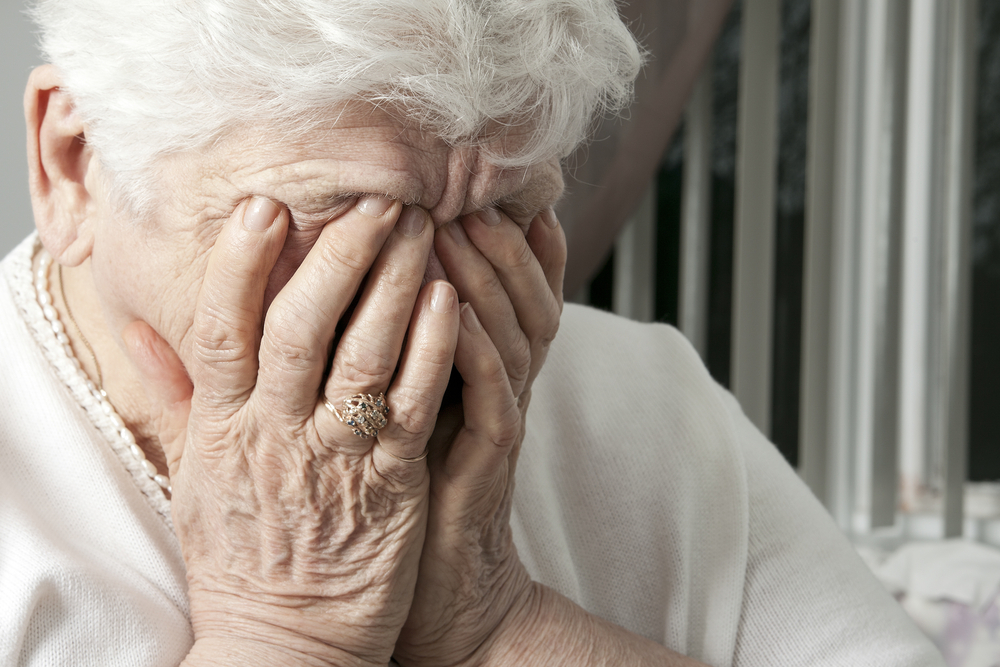 March 22, 2016
March 22, 2016
Sundown Syndrome, or “Sundowning,” as it is often called, is a physiological condition that affects those who have already received a diagnosis of mixed dementia or Alzheimer’s disease. Although it affects a large percentage of those with these diagnoses, many individuals have no idea that the mood swings and periods of confusion that occur during certain times of the day aren’t fluke events. Instead, they may be caused by Sundown Syndrome.

What exactly is it? Sundown Syndrome refers to a patient’s reaction and subsequent behavioral changes that occur during periods of low light – often at the very end of the day or sometimes during the early morning hours. Interestingly, more patients seem to suffer from Sundowning during the morning hours, even though the name implies that the evening would be the most difficult time of day. Patients will see the worst effects of this condition during the middle stages of dementia or Alzheimer’s disease, though it can happen at any time. Though insufficient research is available – patients who pass away from late-stage Alzheimer’s have generally stopped suffering from Sundowning, indications exist that show that minimal melatonin production can cause adverse effects in patients. Since melatonin is a byproduct of exposure to light, individuals may have greater problems during time periods of low sunlight.
What are the symptoms? Individuals with dementia or Alzheimer’s who are likely suffering from Sundown Syndrome may present with one or more of the following symptoms:
- Confusion – as the light begins to fade and shadows become more pronounced, a greater sense of confusion may set in. This confusion may be apparent in patients, or it may be something that is internalized – many patients actually self-reflect on this sense of confusion and are acutely aware of the feeling.
- Mood swings – If the patient’s mood takes a turn for the worse toward the end of the day, or early morning mood issues have the patient yelling at family members or caregivers for no apparent reason, Sundown Syndrome may be the culprit.
- Fatigue – Both physical and mental fatigue, though more common toward the end of the day in both affected and healthy individuals alike, can be a warning sign. Feelings of exhaustion as the sun sets may indicate Sundowning.
- Tremors – If tremors or a general shaking of the body is more pronounced during the early morning hours or as the sun sets, Sundowning may be the culprit. Try to take notes as to when tremors are the worst, and ask any assigned caregiver to do the same.
- Restlessness – Those with Sundown Syndrome may feel fatigued at night or in the morning, but the feeling of confusion or irritability may actually make it more difficult to get a good night’s sleep. Some individuals will pace the home or go for a walk in this condition, which can introduce the possibility of injuries or of even getting lost.
How Do You Treat Sundown Syndrome? There is no cure for this condition, and the ability for researchers to uncover the root causes – and hopefully potential remedies, is limited due to the timeframe in which Sundown Syndrome is seen in Alzheimer’s patients. It is often most prevalent during the middle term of Alzheimer’s, so there is little that can be done to examine brain tissue as the patient is still, in most cases, very much alive. Though it isn’t curable, health professionals do agree that there are treatments that can be administered that can help seniors who may be suffering from Sundown Syndrome. Here are some of the most effective treatments known today:
- Sleep schedule – Providing a senior with a consistent and manageable sleep schedule can help to minimize the effects of Sundown Syndrome. Try to get them to bed at a reasonable hour and then manage their wake-up time to keep them in bed until there is sufficient natural light in the room.
- Increase Activity – By upping the amount of physical activity (within reason, of course) each day, your senior will feel naturally tired by the end of the night and will more easily fall into a predictable sleep pattern. Fatigue is to be expected at first, so gradually increase the physical activity levels until you’ve affected the patient’s ease of falling asleep.
- Limit naps – There is a natural tendency among those who suffer from dementia or Alzheimer’s to nap throughout the day. Though some napping is acceptable, excessive napping or doing so too late in the day can negatively affect the individual’s ability to fall asleep easily. This can amplify the negative side-effects of Sundown Syndrome.
- Supplements – Two supplements should be considered – one to add, one to limit. First, limit the intake of caffeine. Caffeine is an incredibly powerful stimulant that can provide us with a rapid boost of energy – though it isn’t long-lasting. The problem is, too much caffeine late in the day can harm the body’s ability to fall into a comfortable sleep cycle. The supplement that might be beneficial to add is melatonin. Studies suggest that increased melatonin can help to stave off some Sundown Syndrome side effects.
If you feel that your senior-aged friend or family member may be suffering from the effects of Sundown Syndrome, contact a qualified healthcare professional immediately. You may be able to start a course of treatment and introduce some lifestyle changes that can make your senior-aged friend much more comfortable and content.
For in home care for an Alzheimer’s patient, please contact us today.



